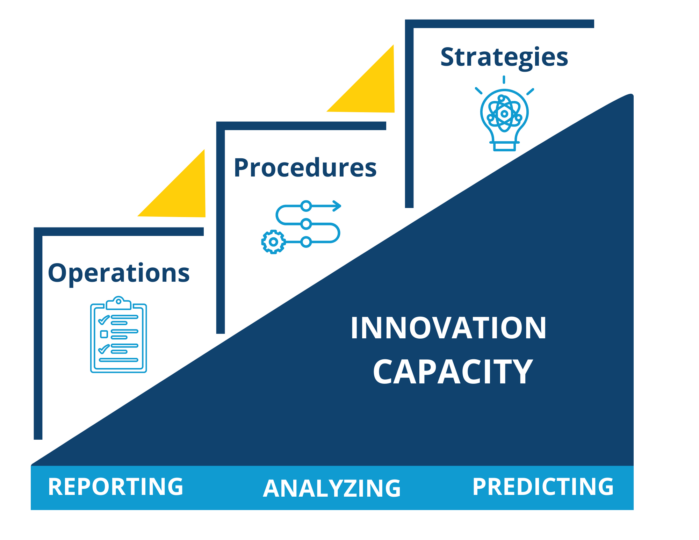Increasing Your Analytics Maturity and Innovation Capacity
Increasing Your Analytics Maturity and Innovation Capacity
While reading a recent EDUCAUSE article about the state of analytics in higher education, we were particularly struck by this line: “EDUCAUSE research shows little-to-no progress in overall institutional analytics maturity in recent years.”
Why the lack of progress? “Analytics” has become a catch-all word to cover everything from data platforms to aspirational reports, with no clear meaning. The focus, often perpetuated by vendor and marketing hype, has been on analytics as the solution for any institutional challenge. Implementing Guided Pathways? You need analytics. Closing your achievement gap? Analytics will do it!
The conversation is more often about the importance of analytics, than about the cultural shift required to effectively use data. Shiny dashboards presented in a boardroom are just the tip of the analytics iceberg, and analytics are not just about technology. This nebulousness makes it challenging for institutions to assess their analytics maturity level. How do you reach a destination with no clear definition or path?

We often propose a simple maturity model such as this when working with clients, to help guide their development and adoption of analytics. As the EDUCAUSE author notes, it’s a big leap from collecting data to actually using data to support the institution’s strategic goals, create meaningful change, and develop the capacity to innovate. Although operational reporting doesn’t sound as sexy as predictive analytics, it’s impossible to effectively support higher-level reporting objectives without that foundational base.
Data and analytics have great potential and possibility for supporting solutions to institutional challenges, but only when properly deployed, maintained, and used. Beyond the technical aspects, there are equally important people and process considerations, to ensure that you have the staff resources to maintain, grow, and use your analytics platform. Analytics is not a magic box and it’s not easy! Without the supporting processes in place, predictive models cannot be effectively used. This post kicks off a series where we’ll discuss additional considerations in more detail.
-Higher Ed Team

